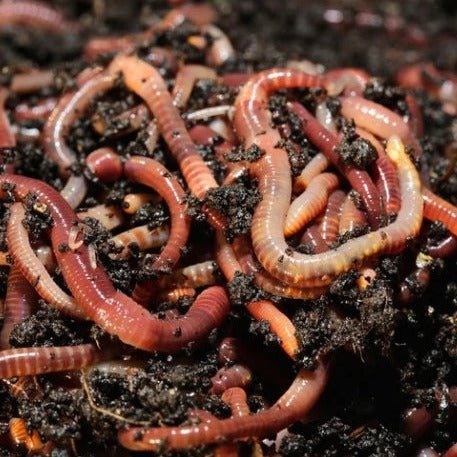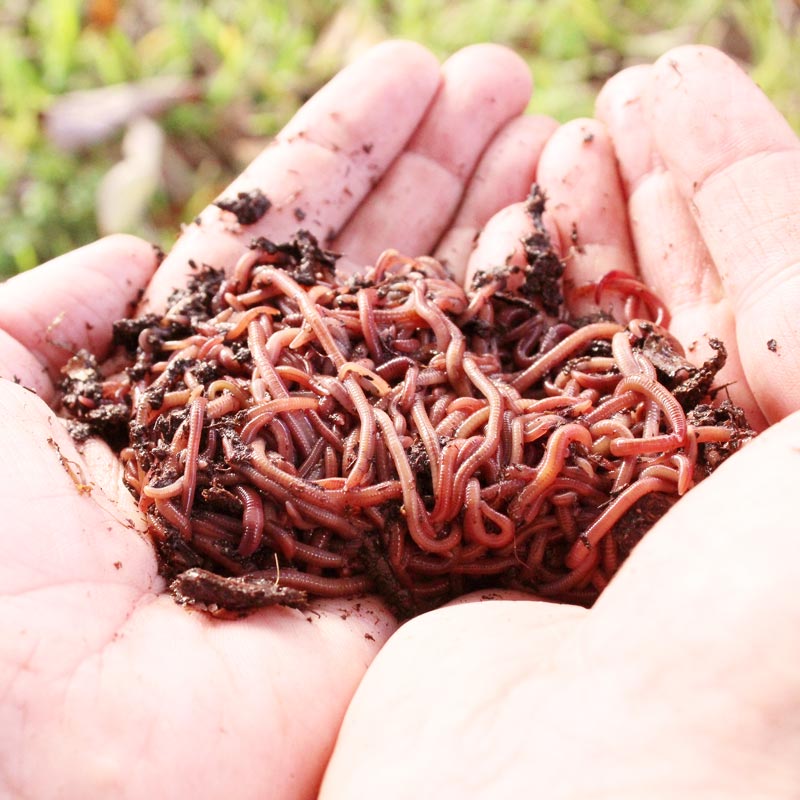Get Your Lawn in Top Shape with the Help of Lake Hickory Bait Grass Care Solutions
Get Your Lawn in Top Shape with the Help of Lake Hickory Bait Grass Care Solutions
Blog Article
Unlock the Tricks of Red Wigglers: Your Overview to Composting Success
The assimilation of red wigglers into composting practices provides a substantial opportunity for enhancing dirt wellness and promoting sustainability. These microorganisms are not just reliable recyclers of organic waste; they offer a myriad of advantages that can change garden management. Understanding their needs and actions is critical for optimizing their capacity, from establishing a proper worm container to feeding them the ideal materials. As we check out the important parts of effective vermicomposting, one might ask yourself exactly how these tiny creatures can result in a much more dynamic and efficient garden ecological community.

What Are Red Wigglers?
(Red Wiggler Express)Red wigglers, medically known as Eisenia fetida, are a varieties of earthworm largely made use of in composting because of their remarkable capability to decompose natural issue effectively. These worms are defined by their reddish-brown pigmentation and a fractional body, usually gauging in between 3 to 4 inches in length. Unlike various other earthworm species, red wigglers prosper in rich, natural settings, making them excellent for vermicomposting systems.
Indigenous to The United States And copyright, they are often found in decaying leaves and compost piles, where they play a crucial role in nutrient recycling. Their adjustment to residing in a wet, aerobic atmosphere enables them to take in large amounts of natural waste, damaging it down into nutrient-rich castings that improve dirt health.
Red wigglers replicate rapidly, with a single worm efficient in generating several cocoons weekly, each containing numerous hatchlings. This quick recreation rate contributes to their effectiveness in composting procedures. They like temperatures in between 60 ° F and 80 ° F, and their activity degree raises dramatically within this array, additional helping in the decay process. Understanding the biology and behavior of red wigglers is essential for optimizing their potential in composting applications.
Benefits of Using Red Wigglers
Using the power of red wigglers in composting provides many benefits that boost soil health and wellness and advertise lasting waste monitoring. These amazing organisms effectively damage down natural matter, transforming cooking area scraps and lawn waste into nutrient-rich vermicompost. This completed item is extremely advantageous for plant growth, as it improves dirt framework, raises dampness retention, and improves nutrition availability.

(Lake Rhodhiss Bait)In addition, the visibility of red wigglers in your composting system can increase the composting procedure, creating high-quality garden compost in a portion of the moment compared to standard methods. The spreadings created by these worms are also including helpful microorganisms that even more enhance the dirt ecosystem.
Setting Up Your Worm Bin
Developing an efficient worm container is a simple procedure that can considerably improve your composting initiatives. Worm bins can be made from plastic storage containers, wooden boxes, or commercially offered worm bins.
Next, prepare the bed linen product, which functions as the worms' environment. A mix of shredded newspaper, cardboard, and coconut coir functions well, supplying a comfy environment for the worms. Go for a bed linens depth of regarding 4-6 inches. i loved this Moisten the bed linen lightly, guaranteeing it looks like a moist sponge without excess water merging at the base.

Feeding Your Red Wigglers
To make sure the wellness and productivity of your red wigglers, it is important to supply them with a balanced diet plan that satisfies their dietary requirements. Red wigglers flourish on a diverse variety of organic products, which not just provide necessary nutrients but additionally promote efficient composting.
Start by incorporating cooking area scraps such as veggie peels, fruit cores, and coffee premises. Stay clear of citrus fruits, onions, and garlic, as these can be harmful to worm health. Furthermore, present shredded paper, cardboard, and dry fallen leaves to create a well-aerated environment.
Feeding regularity ought to be checked; normally, worms can take in half their body weight in food weekly. It is vital to prevent overfeeding, as excess food can cause unpleasant smells and draw in bugs. An excellent method is to include food in little amounts, allowing worms to process it prior to introducing extra.
Maintaining dampness degrees is additionally crucial; the bedding needs to be wet but not soaked. Be sure to consistently inspect the temperature level and pH degrees of the container to make sure an optimal setting for your red wigglers, ultimately boosting their composting performance.
Harvesting and Using Garden Compost
A successful composting process with red wigglers finishes in the abundant, dark garden compost called vermicompost, which can dramatically enhance soil health and wellness and plant development. Harvesting this nutrient-dense material generally occurs every three to six months, depending on the size of your system and the amount of raw material being processed.
To gather, gently separate the compost from the worms and any kind of undecomposed materials. One reliable method involves relocating the components of the container away and adding fresh bed linens and food to the void, motivating the worms to migrate. After a couple of days, the compost can be gathered from the opposite side.
It is important to use vermicompost correctly to optimize its benefits. By including vermicompost right into your horticulture program, you not just reuse natural waste however additionally develop a thriving community that supports sustainable gardening techniques.
Conclusion
In recap, red wigglers serve as phenomenal allies in composting initiatives, changing natural waste right into nutrient-rich vermicompost. By understanding the ideal conditions for their environment, feeding requirements, and compost harvesting methods, garden enthusiasts can enhance soil health and advertise plant vitality.
Report this page